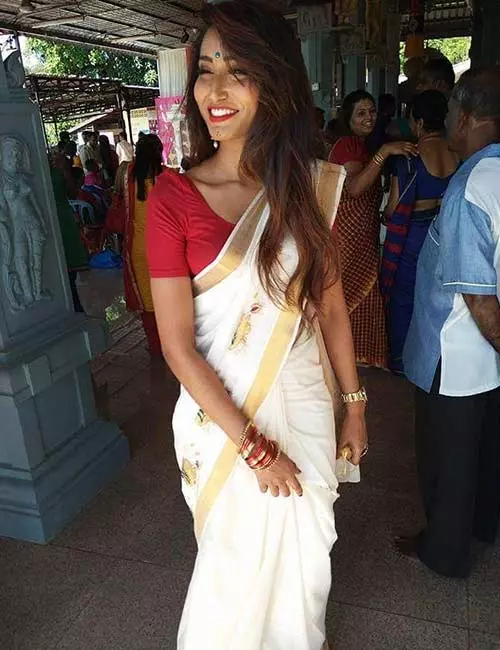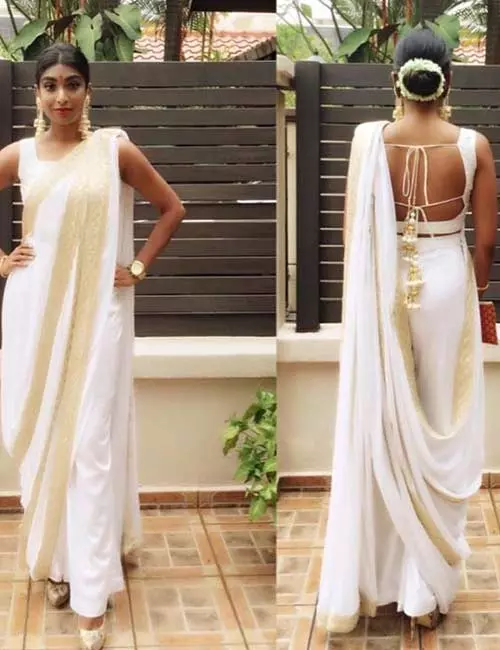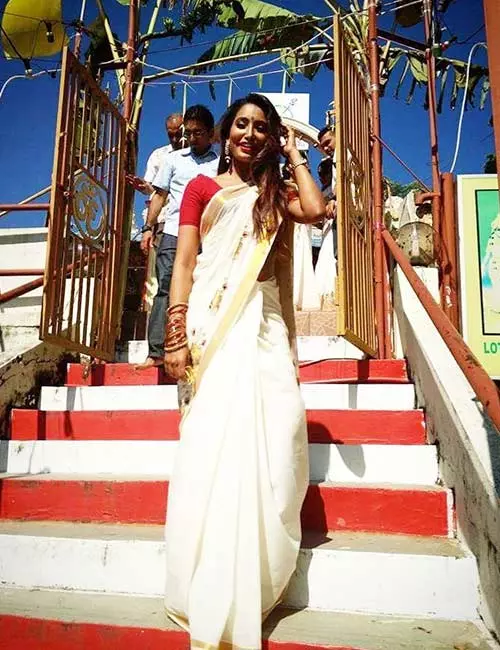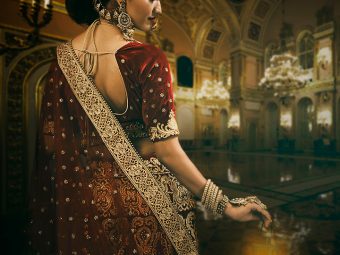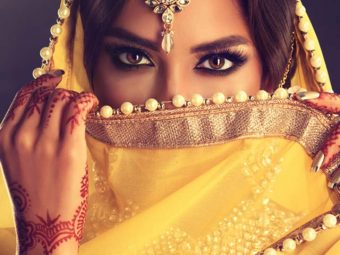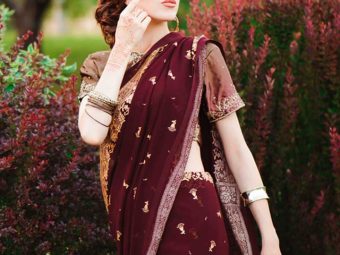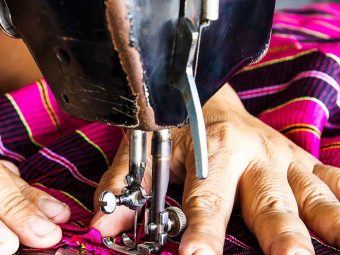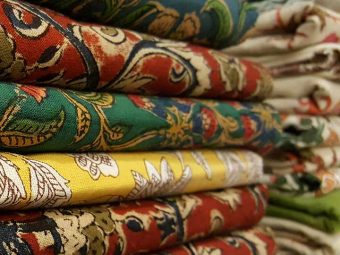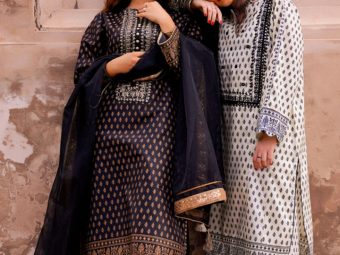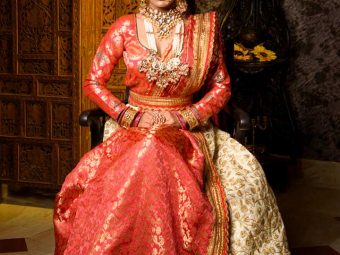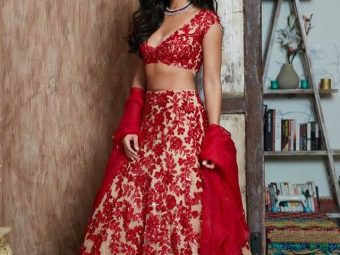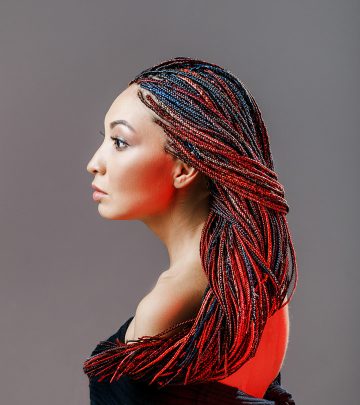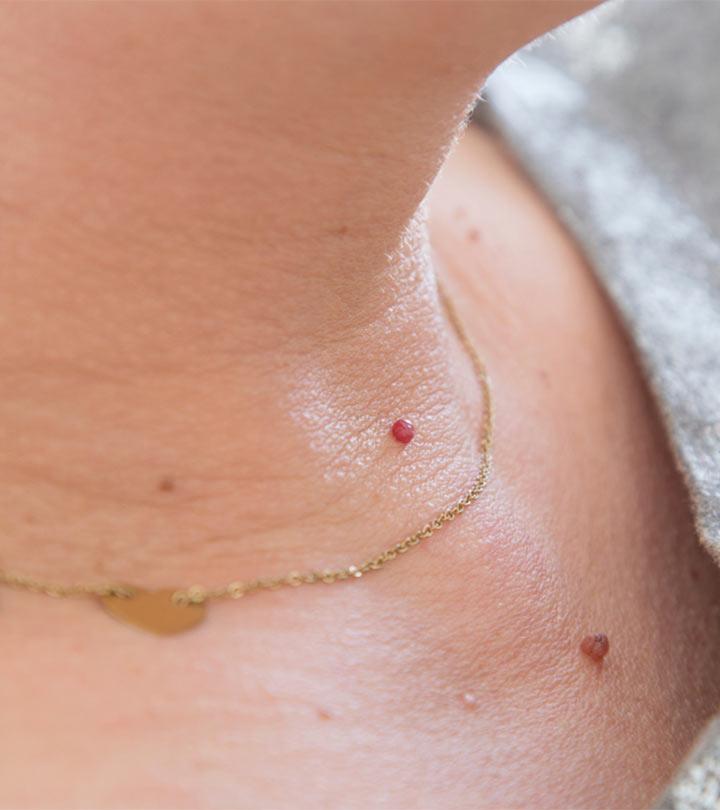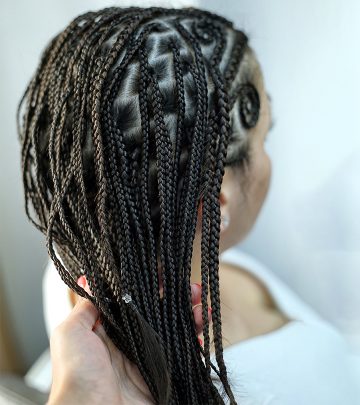Why Do Kerala Women Wear The White And Gold Saree?
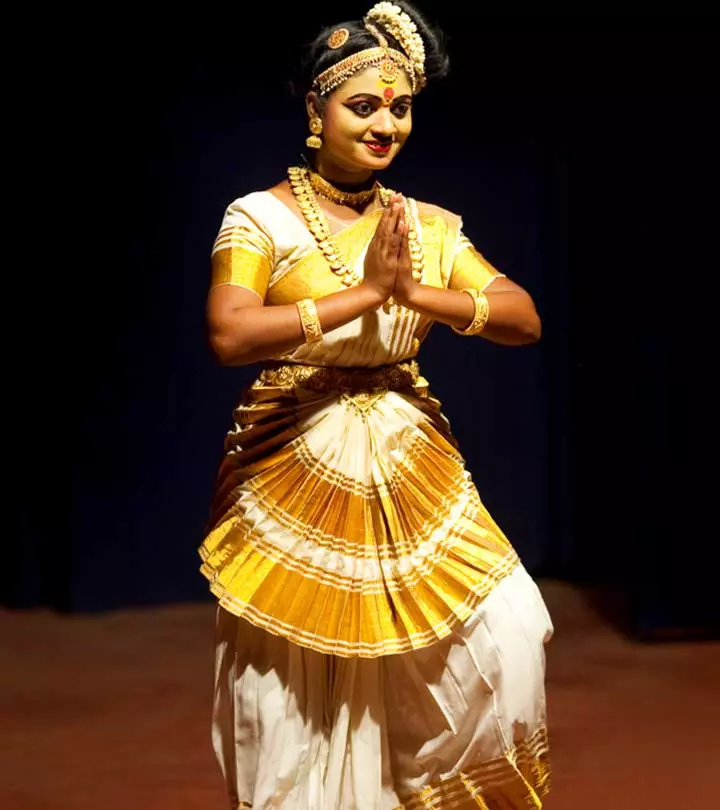
Image: Shutterstock
Take a trip down to Kerala, God’s own country, and you’ll find yourself blissfully lost in a lush canopy of greenery that reflects its viridescent hue in the lakes. This land of natural beauty is not only home to some of the most delectable cuisines in the country but is also the abode of the heavenly white and gold saree.
Dusky beauties all over Kerala adorn themselves with the white and gold saree (made of either silk or cotton) that truly befits the stature of royalty, making every woman look like a queen.
But have you ever wondered why this particular color scheme has been worn by Keralite women since time immemorial? What is the significance of the simple yet rich white and gold saree? Well, we’re going to quench your thirst for this knowledge right here, right now.
The Kerala Saree – White & Gold At Its Finest
The Kerala saree has long been a symbol of the tradition and culture of this sea-lined state. In fact, its origins can be traced back to ancient times, when the Buddhist era was in its full glory. Then it was popularly referred to as ‘Mundum Neriyathum’ where the Mundu was to be the portion of the saree that was worn on the lower half, while the Neriyathu was the piece of cloth that was worn on the top half of the woman’s body. Yes, at that time, the traditional Kerala Kasavu (as it is known now) was a two-piece garment.
The Mundum Neriyathum was so popular among women during the Buddhist era that it was mentioned in Buddhist as well as Jain literature, and was referred to as ‘Sattika’.
Legend has it that the design of the Kerala Kasavu was probably inspired by the Greco-Roman attire known as ‘Palmyrene.’ The Palmyrene was a costume that was commonly worn at that time and featured a long piece of cloth that was unstitched and had a colored border. The Palmyrene, too, was fixed at the left shoulder after being wrapped around the woman’s body. In fact, colored borders of the Palmyrene, known as palla, might be the inspiration behind the present-day Kerala Kasavu’s border known as pallu.
With that being said, the current way of draping the Kerala Kasavu is fairly recent and had only started in the 1970s. Before that, the saree was worn as it was always meant to be – a two-piece cloth item with one part for the lower half of the body and the other for the upper half.
So, Why The White And Gold Color Scheme?
Ah, now we come to the main section of this amusing and educational journey. The white and gold combination of the Kerala saree is not only elegant but is also quite interesting if you consider the logic behind it.
First of all, the white cotton cloth was a practical choice if we take into account the hot climate of Kerala. The scorching sun does not support the wear of dark colors as they trap heat and can make you feel extremely hot. White, on the other hand, reflects heat and the cotton material makes it a very breathable item of clothing. Besides, don’t you think the pristine white color looks extremely good against the very green background? Also, the zari gold border surely breaks the monotony of a plain white saree, which is generally associated with mourning.
Secondly, the mix of white and gold is considered to be highly auspicious down south. This refined and sacred color combination is especially worn during the harvest festival of Kerala, which is known as Onam.
Lastly, these very colors are also the colors of Lord Vishnu. Kerala, being a land where religious traditions are followed very seriously, the colors of the Gods were adopted into the local clothing to suggest piety and holiness.
How Is This Saree Draped?
While the modern-day Kerala Kasavu can be draped the way you ordinarily drape your saree, the Mundum Neriyathum is worn differently. The Mundu is wrapped around the hips and below the navel and the Neriyathu is wrapped around the front torso and tucked into the petticoat. A blouse, which sits above the breastbone, is worn before the Neriyathu is wrapped around the torso. And just like most other saree drapes, the midriff is left bare. When worn, it actually looks like a one-piece saree rather than a two-piece attire.
So, now you know everything about this beautiful white and gold Kerala saree. Even though this is a traditional piece, you can still buy and wear this saree on most festive occasions due to its classic appeal and delicately elegant appearance.


